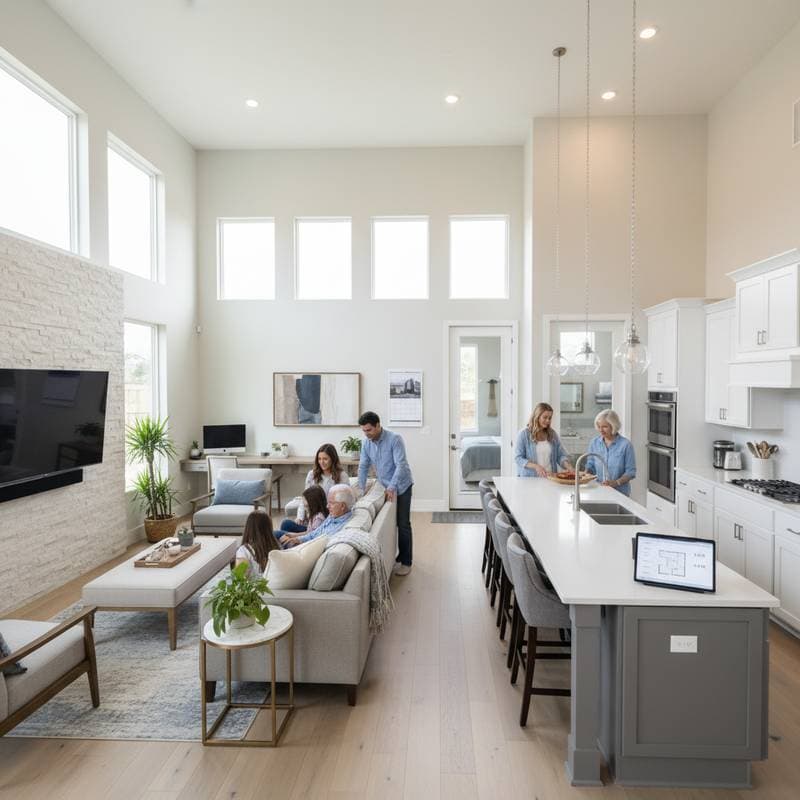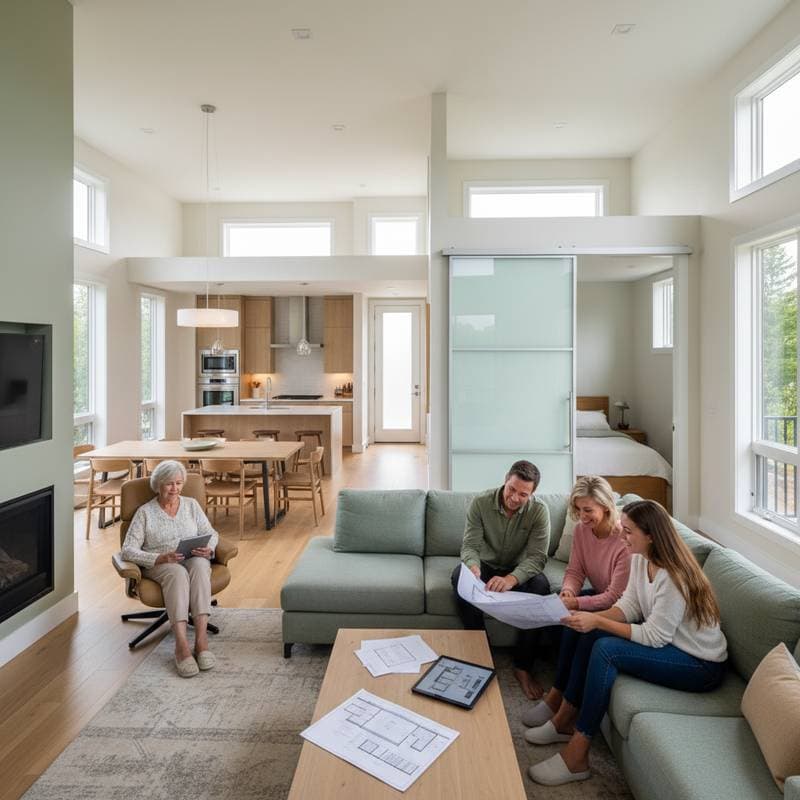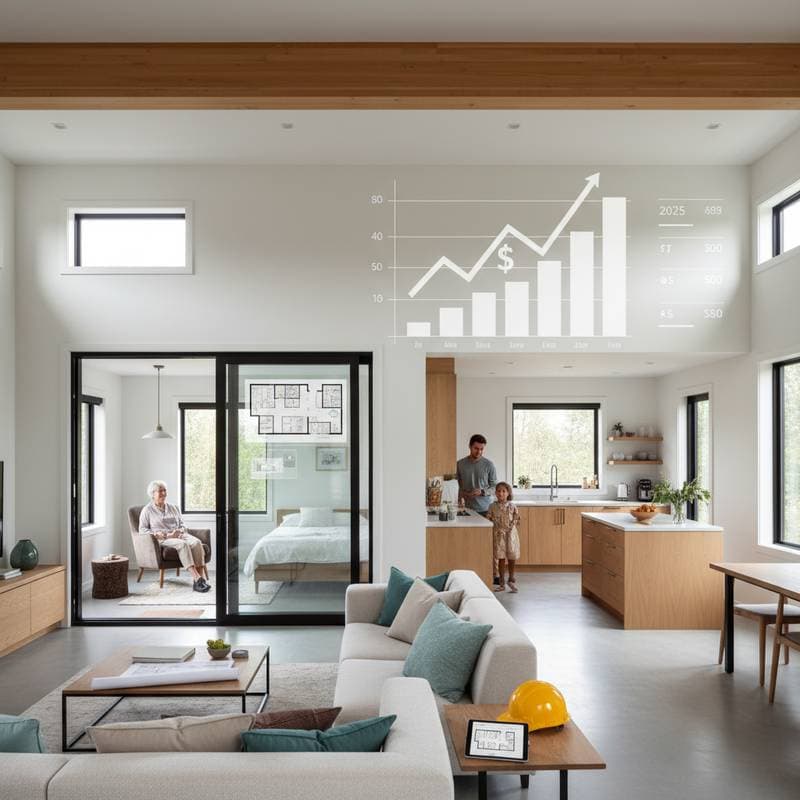The Rise of Multigenerational Living
Multigenerational homes have gained prominence as families seek ways to provide support, share resources, and strengthen bonds across generations. These living arrangements offer economic advantages, such as combined household incomes, while addressing caregiving needs for aging relatives or young adults starting out. However, the key challenge lies in designing spaces that promote togetherness without sacrificing individual privacy.
In 2025, architectural trends emphasize modular and adaptable structures that cater to diverse family needs. Homeowners prioritize layouts that allow for shared kitchens or living rooms alongside separate bedrooms and bathrooms. This approach ensures that daily interactions remain voluntary and enjoyable, reducing potential conflicts.
Innovative Design Features for Privacy and Unity
Modern multigenerational homes incorporate clever design elements to balance communal and private zones. Accessory dwelling units, or ADUs, provide standalone spaces ideal for in-laws or grown children. These units typically range from 400 to 800 square feet and can include full kitchens, laundry facilities, and private entrances to maintain independence.
Attached suites offer another popular option, integrating seamlessly with the main house through connecting doors or hallways. Designers often use sliding partitions or pocket doors to create flexible boundaries, allowing spaces to shift from shared to private as needed. For instance, a ground-floor suite might serve as a guest area initially, then convert to a caregiver's quarters.
Accessibility remains a cornerstone of these designs. Wide doorways, zero-step entries, and lever-style handles accommodate mobility challenges. Smart home technology, such as voice-activated lighting and thermostats, enhances comfort for all ages without requiring physical modifications.
Cost considerations vary by location and scale. Building an ADU might range from $100,000 to $250,000, depending on materials and site preparation. Attached suites often cost $75,000 to $150,000, benefiting from shared infrastructure like plumbing and electrical systems. Energy-efficient features, including solar panels and insulated walls, can offset initial expenses through long-term savings.
Planning Your Multigenerational Home
Effective planning begins with assessing family dynamics and long-term goals. Conduct a family meeting to map out current and future needs, such as space for hobbies, work-from-home areas, or medical equipment. Consult architects specializing in multigenerational designs to review site feasibility and draft preliminary floor plans.
Zoning regulations play a critical role. Many municipalities now permit ADUs under relaxed codes, but setbacks, height limits, and utility connections must comply. Engage a local planner early to navigate approvals and avoid delays.
Budgeting requires a detailed breakdown. Allocate funds for design fees (5 to 10 percent of total cost), permits, and contingencies (10 to 15 percent). Explore financing options like home equity loans or grants for accessibility improvements. Prioritize durable materials, such as vinyl flooring and low-maintenance siding, to minimize future upkeep.
Managing Construction Effectively
Once plans are finalized, construction demands careful oversight to stay on schedule and within budget. Individuals with construction experience can lead the project by hiring licensed subcontractors for specialized tasks like electrical wiring or roofing. This hands-on approach allows for real-time adjustments and cost control.
For those without expertise, engaging a general contractor proves essential. A reputable contractor coordinates all phases, from foundation work to finishing touches, while ensuring compliance with building codes. Select professionals through references or professional associations, and request detailed contracts outlining timelines, payments, and warranties.
During the build, regular site visits help monitor progress. Address issues promptly, such as material substitutions or weather delays, to prevent escalation. Aim for a six- to twelve-month timeline, depending on project scope.
Maintenance, Care, and Lifespan
A thoughtfully constructed multigenerational home endures for generations with consistent maintenance. Establish routines to protect structural integrity and functionality.
- Conduct annual inspections of caulking and weather seals to avert moisture intrusion and related damage.
- Replace HVAC filters every three months in shared systems to optimize air quality and efficiency.
- Flush water heaters yearly to remove sediment buildup and prolong operational life.
- Refinish hardwood floors and repaint interior walls every seven to ten years to preserve aesthetics and property value.
Anticipate evolving needs by incorporating adaptability from the start. Install reinforced walls for future grab bars or handrails, and select adjustable-height counters in kitchens and bathrooms. These proactive measures extend the home's usability, supporting transitions like aging in place or accommodating new family members without extensive overhauls.
Frequently Asked Questions
How large should a secondary suite measure?
Target 350 to 500 square feet minimum to accommodate a bedroom, compact kitchenette, and full bathroom comfortably. Larger sizes, up to 700 square feet, allow for additional living space like a small office or storage area.
Is it possible to rent an ADU originally built for family members?
Yes, provided local ordinances permit it. Review zoning restrictions on short-term versus long-term rentals, and consider income potential against any HOA rules or tax implications.
What permits are typically required?
Building permits cover structural elements, while separate approvals handle electrical, plumbing, and mechanical installations. Rural properties may need additional site plans or septic system evaluations if not connected to municipal services.
Does adding a second unit raise property taxes?
Generally, yes, with the adjustment reflecting the added square footage and appraised value of the new construction. Consult your local assessor for precise calculations and potential exemptions for family-use additions.
How can smart technology enhance multigenerational living?
Integrated systems enable remote monitoring of security, temperatures, and appliances, promoting safety and convenience. For example, automated locks allow independent access while alerting family members to arrivals or departures.
Steps to Bring Your Vision to Life
Initiate the process with a practical assessment of your property and family's spatial preferences. Diagram current usage patterns, highlighting areas for communal gatherings versus private retreats. Review sample floor plans from architectural resources to spark ideas that align with your lifestyle.
Reach out to your local building department promptly to clarify zoning requirements and permitting procedures. This step reveals timelines and potential incentives, such as tax credits for energy-efficient builds.
A strategically designed multigenerational home nurtures close relationships while honoring personal boundaries. It provides a resilient foundation for life's changes, from supporting elders to launching young adults, ultimately enhancing family resilience and well-being.



